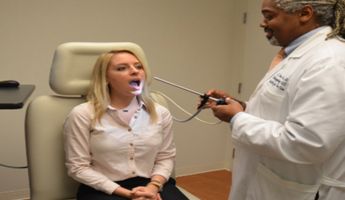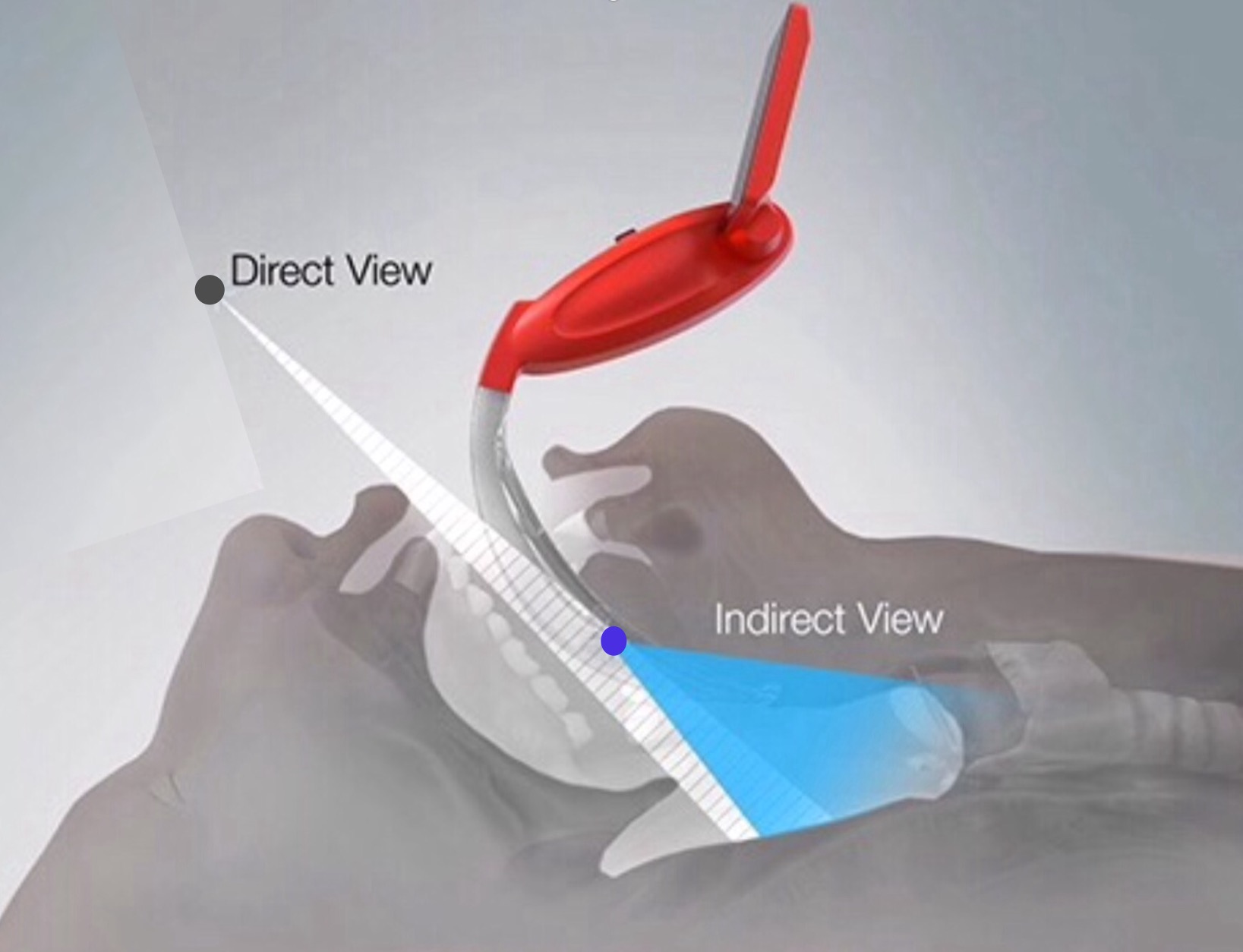Laryngoscopy in Bahamas
Search and Compare the Best Clinics and Doctors at the Lowest Prices for Laryngoscopy in Bahamas

Find the best clinics for Laryngoscopy in Bahamas
No clinics available
Morocco offers the best prices Worldwide
Price: $ 111

- Home
- Bahamas
WHY US?
At Medijump, we're making medical easy. You can search, compare, discuss, and book your medical all in one place. We open the door to the best medical providers worldwide, saving you time and energy along the way, and it's all for FREE, no hidden fees, and no price markups guaranteed. So what are you waiting for?

Free

Best Price

Widest Selection

Risk-Free
What you need to know about Laryngoscopy in Bahamas

Laryngoscopy is a procedure that gives your doctor a close-up view of your larynx (voice box), including the vocal cords and nearby structures such as the back of the throat, using a special scope called a laryngoscope. There are several reasons why you might need a laryngoscopy, including:
-
To look for the causes of symptoms in the larynx or throat, such as persistent cough, bloody cough, hoarseness, bad breath, throat pain, narrowing of the throat (strictures or stenosis), persistent earache, difficulty swallowing, as well as mass or growth in the throat.
-
To take biopsy samples of any abnormal areas in the vocal cords or nearby parts of the throat. The samples are then examined closely in a laboratory to find out if it contains cancer cells.
-
To treat certain problems in the larynx, including some early stages of cancers.
-
To remove a foreign object from your throat.
What is the cost of Laryngoscopy in Bahamas?
Pricing is subject to fluctuation, influenced by an array of elements such as the geographical whereabouts of the facility, proficiency of the healthcare provider, intricacy of the situation, and the extent of insurance. There may be certain therapeutic centers that propose bundled deals, comprised of post-treatment follow-ups, presenting a valuable alternative. One must not overlook that even though pricing plays a substantial role, it shouldn't detract from the superiority of treatment. Pondering on the skills and know-how of the medical practitioner is vital to attaining optimal results.
What does a Laryngoscopy Procedure Involve?
The laryngoscopy procedure may be done in different ways. There are a few options such as indirect laryngoscopy, direct fiber-optic laryngoscopy, and direct laryngoscopy.
In indirect laryngoscopy, you will sit up straight on a high back chair. Local anesthesia or numbing medicine will be sprayed on your throat so you will not feel anything. Your tongue will be covered with gauze and will be moved to one side to stop it from blocking your doctor’s view. Your doctor will then insert the small mirror into your throat and explore the area. Although your throat is numbed, having a mirror inserted into your throat may still make you gag. Sometimes, your doctor may ask you to make a certain sound in order to make your larynx move. If your doctor found a foreign object in your throat, they will remove it.
Sometimes called flexible laryngoscopy, direct fiber-optic laryngoscopy uses a small telescope attached at the end of a cable, which can go up to your nose and down into your throat. In this type of laryngoscopy, your doctor will give you a numbing medicine for your nose so you will not feel anything. In some cases, your doctor may use a decongestant to open your nasal passages. As in indirect laryngoscopy, you may gag during direct fiber-optic laryngoscopy as well.
Direct laryngoscopy is the most involved type of laryngoscopy. During this procedure, your doctor will push a laryngoscope (a small hand tool that allows your doctor to look into your larynx and other surrounding areas of your throat) down your tongue and lift up the epiglottis. The epiglottis is the flap of the cartilage covering your windpipe that closes during swallowing and opens during breathing. Your doctor may remove small growths or tissue samples for testing (biopsy). They can also use direct laryngoscopy to insert a tube into your windpipe to help you breathe during surgery or in an emergency. With this type of laryngoscopy, you will be given general anesthesia.
How Long Should I Stay in Bahamas for a Laryngoscopy Procedure?
The stay period in Bahamas for a Laryngoscopy can widely differ depending on personal situations. Usually, Laryngoscopy is an outpatient process, suggesting that patients often leave on the same day. Since the results will usually be available within a few days, it is advisable that you stay in Bahamas for 3 to 7 days. Once the results are ready, you will have to visit your doctor to discuss the results. Considering potential follow-up visits that might need a more extended stay is also crucial.
What's the Recovery Time for Laryngoscopy Procedures in Bahamas?
It's crucial to understand that recovery can be quite swift, with many patients able to return to normal activities within a day or two. However, some patients may experience a sore throat, mild discomfort, or hoarseness for a few days after the procedure. Those symptoms can generally be managed with over-the-counter pain medication, rest, and consuming plenty of fluids.
Your throat may be slightly swollen or feel sore for around 2 to 5 days. You may also notice that your voice sounds hoarse. This may resolve within 1 to 8 weeks. You may be asked to speak as little as possible for a week or two. Therefore, if your job requires using your voice, you should take 1 to 2 weeks off work.
What sort of Aftercare is Required for Laryngoscopy Procedures in Bahamas?
Your doctor will give you detailed instructions on what you can and cannot do during your recovery time. Since your mouth and throat will be numb for a couple of hours following the procedure, you will not be allowed to drink or eat anything until the numbness subsides. Your throat may be sore once the numbness wears off. You can gargle with salt water or suck on ice to ease it. Your doctor may also recommend you to take over-the-counter pain relievers.
Keeping an open line of dialogue with your medical practitioner is paramount, informing them of any uncommon symptoms like extended discomfort, trouble with swallowing, or breathing irregularities. Part of your post-treatment care includes routine check-ins, during these sessions, your health provider will track your recovery and deliberate the result of the operation.
What's the Success Rate of Laryngoscopy Procedures in Bahamas?
Recognizing that the Laryngoscopy serves primarily as a diagnostic technique rather than a curative measure is crucial. Usually, its efficacy can be gauged by its capacity to accurately pinpoint disorders impacting the larynx. Broadly speaking, the Laryngoscopy boasts an impressive success rate in accomplishing its chief objective of rendering a comprehensive perspective of the larynx. Nevertheless, the effectiveness of any follow-up treatments hinges on the specific diagnosed condition, the selected therapeutic course, and personal patient factors. In the aspect of detecting cancer, the procedure is hailed for its 100% precision rate.
Are there Alternatives to Laryngoscopy Procedures in Bahamas?
The alternative to laryngoscopy depends on the reason why you need it. Sometimes, your doctor may recommend laryngeal electromyography (laryngeal EMG) as the alternative. With a laryngeal EMG, the muscle activity in the vocal cords and throat are assessed. Another procedure called esophagogram, also called a barium swallow, can also be used. In esophagogram, patients drink a small amount of barium prior to the test and an X-ray is used to see the structure and function of the esophagus during swallowing.
However, these alternatives may not provide the same level of detail or allow for the same diagnostic possibilities as the Laryngoscopy. Thus, the choice of procedure will depend on individual needs and circumstances.
What Should You Expect Before and After the Procedure
Before the process, your medical specialist will carry out a comprehensive health assessment and suggest any needed safety measures. This might include abstaining from food for a certain period ahead of the process to confirm the unobstructed entry for the laryngoscope.
Post-process, there could be a likelihood of a tender throat or a raspy voice for some days, usually mitigated with relaxation and regular medicines. Regular interactions with your medical specialist regarding any concerns or abnormal signs is crucial. A subsequent meeting might be arranged to converse about the results of the process and any impending necessary actions. Hopefully the cause of your symptoms will be found, your problems should be treated, and any foreign object should be removed
What are the Potential Risks of Laryngoscopy?
Generally, Laryngoscopy is considered a safe procedure, but like any medical intervention, it carries a certain degree of risk. It's essential to discuss any potential risks with your healthcare provider to make an informed decision. You should be aware that there are some side effects and risks of laryngoscopy.
These include:
-
Bleeding
-
Pain or swelling in your throat, tongue, or mouth
-
Hoarseness
-
Infection
-
Gagging or vomiting.
What Happens If Abnormalities Are Found During a Laryngoscopy?
Should there be detection of any irregularities like polyps, cysts, or cancer indications during the Laryngoscopy, your medical expert will review the findings and the subsequent measures with you. Based on the circumstances, this might encompass additional examinations such as a biopsy to affirm a diagnosis, or deliberations concerning potential treatment routes.
Though the discovery of unusual characteristics during a Laryngoscopy can evoke worry, it is crucial to bear in mind that prompt detection is critical in successfully tackling many conditions. Keeping an open line of communication with your healthcare authority will aid your comprehension and guide you smoothly through the upcoming stages.
Whilst the information presented here has been accurately sourced and verified by a medical professional for its accuracy, it is still advised to consult with your doctor before pursuing a medical treatment at one of the listed medical providers
No Time?
Tell us what you're looking for and we'll reachout to the top clinics all at once
Enquire Now

Popular Procedures in Bahamas
Prices Start From $308

Prices Start From $759

Prices Start From $8,031

Prices Start From $18

Recommended Medical Centers in Bahamas for procedures similar to Laryngoscopy

- Interpreter services
- Translation service
- Religious facilities
- Medical records transfer
- Medical travel insurance
- Health insurance coordination
- TV in the room
- Safe in the room
- Phone in the room
- Private rooms for patients available
Laryngoscopy in and around Bahamas
The Bahamas is an archipelago and country on the northwestern edge of the West Indies. Having more than 700 beautiful, palm-fringed islands, this country is known for its stunning beaches, coral reefs, crystal clear waters, a myriad of bird species, and historic towns. With everything that it has to offer, it is easy to see why the Bahamas welcomes millions of visitors each year. Besides honeymooners, divers, and beach-goers, the Bahamas is also popular among medical tourists thanks to its exceptionally high-quality services. The country’s booming medical tourism industry is driven by its highly-skilled medical professionals and state-of-the-art equipment, combined with cost-effective medical care and the opportunity to recuperate in beautiful surroundings. Cosmetic and plastic surgeries, total knee replacements, and cardiac surgeries are some of the most popular procedures in the Bahamas.
Popular Parts of the Bahamas
Nassau, the capital of the Bahamas, is one of the chief pleasure resorts in the world. Known as the Bahamas’ crown jewel, it boasts a vibrant culture, breathtaking natural landscape, and rich history. Its signature attraction is the beaches, and the most popular is Cable Beach. With striking white sands and blue waters, this peaceful and beautiful beach is the perfect place to relax and sunbathe. Freeport is also a famous destination in the Bahamas. With its diving sites and world-class restaurants, there are many things to see and do in this city. The main draw of Freeport is its beaches. Some of the most popular are Taino and Fortune Beach.
Weather and Climate in the Bahamas
The Bahamas experiences a tropical climate and the average temperatures will stay the same all year round, between 24°C - 29°C. There are generally two seasons in the country: dry and wet. The dry season, from November to June, is mostly sunny and pleasant. However, it tends to be very crowded during this season, especially from mid-December to mid-April. The wet season spans from July to November. This season sees an increase in rainfall, but there are still many sunny days. The Bahamas also has a hurricane season, which lasts from June to November.
Getting around in the Bahamas
The largest international gateway to the Bahamas is Lynden Pindling International Airport, which is located near the capital city of Nassau, in western New Providence Island. It serves flights to numerous major cities in the Americas and Europe, including New York, Atlanta, and London. The easiest and quickest way to get around is by plane, especially to travel from one island to another. In Nassau and Freeport, the main transport option is the jitneys (private minibusses). In Out Islands, no public transport is available. The best way to get around inside the islands is by taxis or rental cars. However, taxis are often quicker and easier than driving on your own. Ferries and water taxis are all available.
Tourist Visas in the Bahamas
Citizens of 120 countries, including all EU countries, Australia, Canada, China, the US, and the UK, can visit and stay in the Bahamas for up to 3 months without a visa unless stated otherwise. Nationals not listed in the visa-exempt agreement need to obtain a visa to be able to visit the Bahamas.
Additional Information
- Local Currency: The Bahamian dollar (BSD) is the official currency, which is equivalent in value to the US dollar. Bahamian dollar and US dollars are accepted interchangeably in the country.
- Money & Payments: ATMs are widely available on the major islands and can usually be found in airport terminals and at banks. Credit cards are widely accepted. Tipping is expected, usually around 15% for taxi drivers and waiters, and $1-$3 for bag porters and hotel maids.
- Local Language: English is the official language in the Bahamas.
- Local Culture and Religion: Bahamians are deeply religious and the biggest religion is Christianity. However, the constitution guarantees freedom of expression, and other religions are freely practiced.
- Public holidays: Some of the most important holidays in the Bahamas are Whit Monday, National Heroes Day, Randol Fawkes Labour Day, Emancipation Day, Independence Day, Christmas Day, Boxing Day, New Year’s Day, and Majority Rule Day.
Popular Searches
- Plastic Surgery in Thailand
- Dental Implants in Thailand
- Hair Transplant in Thailand
- Breast Augmentation Thailand
- Gastric Sleeve in Thailand
- Gender Reassignment Surgery in Thailand
- Laser Hair Removal in Bangkok
- Botox in Bangkok
- Dermatology in Bangkok
- Breast Augmentation in Bangkok
- Coolsculpting in Bangkok
- Veneers in Turkey
- Hair Transplant in Turkey
- Rhinoplasty in Turkey
- Stem Cell Therapy in Mexico
- Rhinoplasty in Mexico
- Liposuction in Mexico
- Coolsculpting in Tijuana
- Rhinoplasty in Korea
- Scar Removal in Korea
- Gastric Sleeve in Turkey
- Bone Marrow Transplant in India
- Invisalign in Malaysia
- Plastic Surgery in the Dominican Republic
- Tummy Tuck in the Dominican Republic
- Plastic and Cosmetic Surgery in Poland
- Rhinoplasty in Poland
- Hair Implant in Poland
- Dental Implants in Poland
- IVF in Turkey